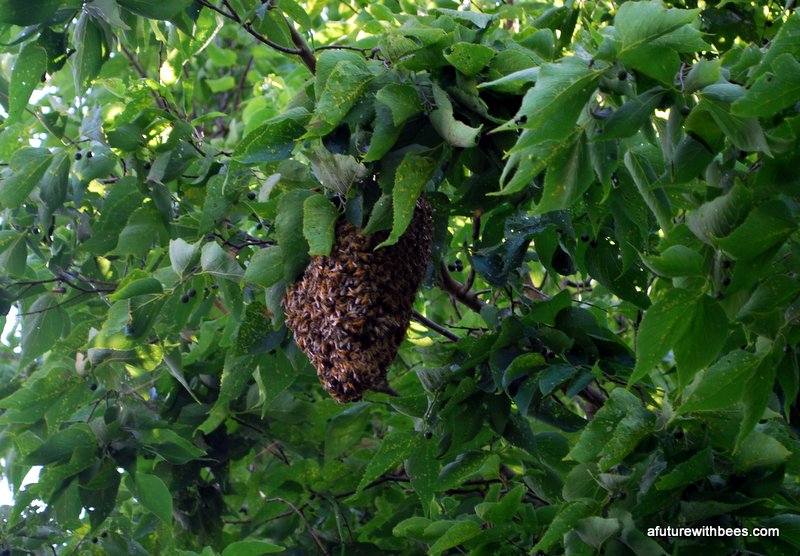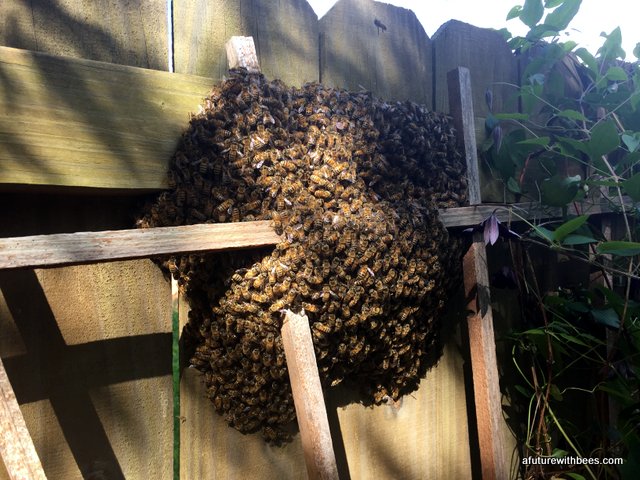Do you have a ball of bees hanging in your tree?
Swarming is the process by which a new honey bee colony is formed when the queen bee leaves the colony with a large group of worker bees. In the prime swarm, about 60% of the worker bees leave the original hive location with the old queen. This swarm can contain thousands to tens of thousands of bees. Swarming is mainly a spring phenomenon, usually within a three to five week period depending on the locale, but occasional swarms can happen throughout the producing season.
Typical honey bees hanging from objects (see pictures below) are honey bees. Honey bees can also find houses, buildings, and other sites ideal. The flying swarm temporarily clusters on an object, such as a tree branch, while scout bees search for a permanent nest site. A hanging swarm may assume any shape, depending on the surface on which it is clustered. Most hanging swarms are round or oval, about the size of a basketball, and dark brown.
Swarms in the clustered stage are relatively gentle, and the risk of stings is low. Nevertheless, treat swarms with caution. A swarm usually relocates to a permanent nest -- a hollow tree, abandoned beekeeper's hive, or inside a hollow wall -- within 24 hours. Swarms have been known to occasionally stay in a location for a few days.
Swarms appear frightening, but they are generally not dangerous. Because the bees do not have a hive to defend, they are docile. Unless the swarm is violently disturbed, they are not likely to attack you.
If your in the SW Missouri area Call or Text 317-698-8088 Email:

